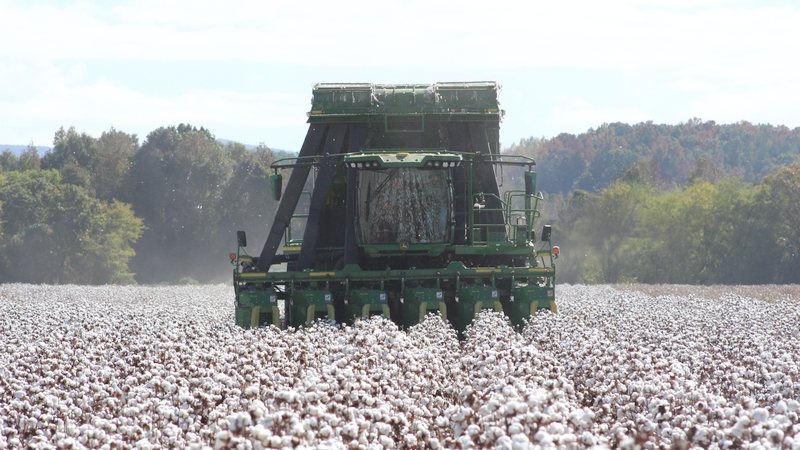ACSA Essay Winner: A Sustainable Journey from Farm to Fashion
Cotton Grower annually offers an essay contest to students enrolled in the American Cotton Shippers Association’s International Cotton Institute program in Memphis. In this year’s winning entry, Layla Baykal offers her thoughts on practical ways to inform the public about this environmentally conscious industry and how to communicate that to the general public.
 Layla Baykal
Layla Baykal
Since the beginning of when cotton fibers were first spun, there have been many challenges that this industry has overcome. From adapting to ever-changing technology, improving logistics, and facing competition from other natural fibers, cotton has always managed to excel. However, the 1960’s marked the decade that the cotton industry first encountered its real adversary, man-made fibers. And they have sought to improve upon and mimic the superior traits that cotton fibers were given by nature and continue to capture the interest of consumers by marketing in a very similar way to cotton. Nonetheless, cotton has persevered through these challenges and managed to keep market share in an increasingly competitive environment.
As a third–generation member of the industry, what I am witnessing most is the growing global trend of consumer focus on environmental concerns and sustainability. And as such, the competition with man-made fibers has shifted to this new frontier. In my opinion, cotton has the natural upper hand, and it is important for the world of cotton that we communicate in a way so consumers can understand this resounding fact. This is a deeply rooted, community-driven industry comprised of individuals who care about the earth that provides their product – something that man-made fibers, or oil really, does not have. Farmers, artisans, and workers form the backbone of this industry, and their livelihoods depend on its success.
In today’s retail landscape, consumers pay close attention to labels and tags on clothing. When one goes shopping and looks at the message on the retail level, there is a large focus on promoting recyclability. Garments often advertise using “20% recycled polyester” or “50% recycled cotton” to sway public perception of an item, suggesting that is more environmentally friendly. This promotion is often enough to encourage a consumer that their product is somehow better without them having to scrutinize the actual tag for listed ingredients. All of these materials can be recycled, but which is the greatest at reducing waste or having a lower carbon footprint?
At the retail level, more should be done to inform consumers about the reality of this by simply adding the information onto the tag. Use facts and data that man-made fibers cannot. Even saying “100% biodegradable” on a cotton T-shirt would increase its competitiveness against its polymer–based counterpart. Consumers, and people in general, like simplicity through labeling. Going beyond vague statements and informing them about the true impact and sustainability of materials may be more effective in supporting cotton.
We should inform consumers about the advantages that cotton does have in conjunction with the sustainability metrics that individuals care the most about. Climate change in relation to carbon footprint, water consumption and scarcity, and the end impact of these products are what consumers care about the most. Energy and water usage are the largest environmental indicators looked at, and oftentimes it is farming practices that are in the public eye when it comes to blame in these areas, which is not the true narrative of the story. The industry could be doing more to emphasize the contrast between resources to produce a natural fiber versus the chemical soups that man-made fibers originate from.
Even indicating on tags how farmers are involved in the process of producing the clothes they wear would be of importance. This would give the consumer greater incentive to have a cotton product by helping them feel proud of supporting those who produce for a living. In a world where groceries are benefiting from this message, why can’t retail and garments? By choosing cotton, consumers actively support these individuals, ensuring fair wages and safer working conditions for everyone involved. This aspect of cotton sets it apart from its synthetic counterparts, which lack the beneficial connection to people and local communities.
Farmers have a natural incentive to be as sustainable as possible. They are always looking for ways to reduce costs and use of pesticides, fuel, and water. Programs like the Cotton Trust Protocol can help create a quantitative way to show consumers this. For example, it can be used to help monitor and display progress made in reducing water consumption and use of spraying. Tools such as the Field to Market platform are an invaluable service in achieving the goal to help consumers see how cotton is truly the more sustainable choice with the least environmental impact. Information and data collected is useful in providing the needed metrics that retailers can use to show to consumers just how much more eco-friendly cotton really is. Automation and data-driven technology is a big area of great interest in helping farmers become more sustainable while reducing cost. The big question is, who should own the data? I think the obvious answer is the farmers themselves. Data is power, and money that could be used to help support them in making these technological changes.
People will always need clothes, and it is important for them to know that a community of environmentally conscious individuals, from farm to mill, are those responsible for providing that service. By aligning the values of consumers with the ethical and sustainable practices of the cotton industry, trust can be built, fostering long-term relationships and ensuring a greener future. As we say at the mill, the trick of the trade is honesty.









